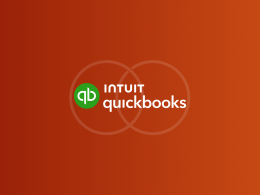With the increasing reliance on technology and digital solutions, cybersecurity has become a major concern for businesses of all sizes. Organizations that store, process, and transmit sensitive data must ensure that their systems and processes are secure and comply with relevant regulations and standards. One such standard that has gained widespread adoption in recent years is SOC 2.
In this article, we will explore what SOC 2 stands for, the principles that underpin SOC 2 compliance, the audit process, and the benefits of achieving SOC 2 compliance.
What Does SOC 2 Stand For?
SOC 2 is a set of guidelines developed by the American Institute of Certified Public Accountants (AICPA) to assess and report on the security, availability, processing integrity, confidentiality, and privacy of data in a service organization. SOC 2 compliance is important for any organization that handles sensitive data, particularly those in industries such as finance, healthcare, and technology. SOC 2 reports are designed to provide assurance to customers, regulators, and other stakeholders that the organization has appropriate controls in place to safeguard their data.
Related articles:
- You might want to read more about accounting cybersecurity risks and how to avoid them.
- You might also like the article about avoiding data security risks during the tax season.
SOC 2 reports are one of several types of SOC reports that are issued by auditors. The other two types of SOC reports are SOC 1 and SOC 3.
SOC 1 reports are designed to provide assurance on the controls related to financial reporting, while SOC 3 reports are designed for general use and can be shared with anyone.
SOC 2 reports are becoming increasingly important as more organizations outsource critical functions to service providers. SOC 2 compliance provides customers with the assurance that the service provider has appropriate controls in place to protect their data.
Having an understanding of these primary types of SOC reports is useful, as the comparison of SOC 1 vs. SOC 2 vs. SOC 3 goes deeper than you might think.
SOC 2 Principles
The SOC 2 framework is based on five trust service principles (TSPs) that underpin SOC 2 compliance. These principles are:
Security: The security principle requires that the organization has appropriate controls in place to protect against unauthorized access, disclosure, and destruction of data. This includes physical and logical access controls, encryption, and network security.
- The availability principle requires that the organization’s systems and services are available for operation and use as agreed upon in the service level agreement (SLA). This includes monitoring of system availability, backup and recovery procedures, and disaster recovery plans.
- The processing integrity principle requires that the organization’s processing systems are complete, accurate, timely, and authorized. This includes data validation, error handling, and transaction completeness and accuracy.
- The confidentiality principle requires that the organization’s data is protected against unauthorized access and disclosure. This includes access controls, encryption, and data masking.
- The privacy principle requires that the organization’s data is collected, used, retained, and disclosed in accordance with the organization’s privacy notice, as well as applicable laws and regulations. This includes policies and procedures related to data retention and disposal, consent, and data subject rights.
Each of these principles is important in ensuring that the organization has appropriate controls in place to protect against risks to the confidentiality, integrity, and availability of data.
SOC 2 Audit Process
To achieve SOC 2 compliance, the organization must undergo an audit by a third-party auditor. The audit process typically involves the following steps:
Step #1: Scoping.
The auditor and the organization work together to define the scope of the audit, including the systems, processes, and controls that will be evaluated.
Step #2: Testing
The auditor performs testing to assess whether the organization’s controls are operating effectively and meet the requirements of the SOC 2 principles.
Step #3: Reporting
The auditor issues a SOC 2 report summarizing their findings, which includes a description of the organization’s controls and an opinion on the effectiveness of those controls.
The SOC 2 audit can be challenging for organizations, particularly those that are new to the process. Some common challenges that organizations may face during the audit include:
- Lack of documentation
The auditor will require evidence that the organization has appropriate controls in place. If the organization does not have adequate documentation to support this, it can make the audit more difficult.
- Misunderstanding of requirements
The SOC 2 principles are complex, and it can be challenging for organizations to understand what is required of them. This can lead to ineffective controls or controls that do not meet the requirements of the SOC 2 principles.
- Limited resources
Preparing for a SOC 2 audit can be time-consuming and resource-intensive, particularly for smaller organizations that may have limited staff or budget.
Despite these challenges, achieving SOC 2 compliance can provide significant benefits to organizations.
Benefits of SOC 2 Compliance
Improved security and data protection: SOC 2 compliance requires organizations to have appropriate controls in place to protect against risks to the confidentiality, integrity, and availability of data. This can help to prevent data breaches and other security incidents, reducing the risk of financial and reputational damage.
Competitive advantage
SOC 2 compliance is becoming increasingly important to customers and other stakeholders. Achieving SOC 2 compliance can demonstrate to customers that the organization takes data security seriously and has appropriate controls in place to protect their data. This can provide a competitive advantage over organizations that are not SOC 2 compliant.
Strengthened relationships with partners and customers
Many organizations require their service providers to be SOC 2 compliant. Achieving SOC 2 compliance can help to strengthen relationships with partners and customers, as it provides assurance that the organization has appropriate controls in place to protect their data.
Conclusion
In today’s digital landscape, data security is a critical concern for businesses of all sizes. SOC 2 compliance provides organizations with a framework for assessing and reporting on the security, availability, processing integrity, confidentiality, and privacy of data in a service organization. Achieving SOC 2 compliance can be challenging, but it provides significant benefits, including improved security and data protection, competitive advantage, and strengthened relationships with partners and customers. As the importance of data security continues to grow, SOC 2 compliance is becoming increasingly important for organizations that handle sensitive data.








.png)
